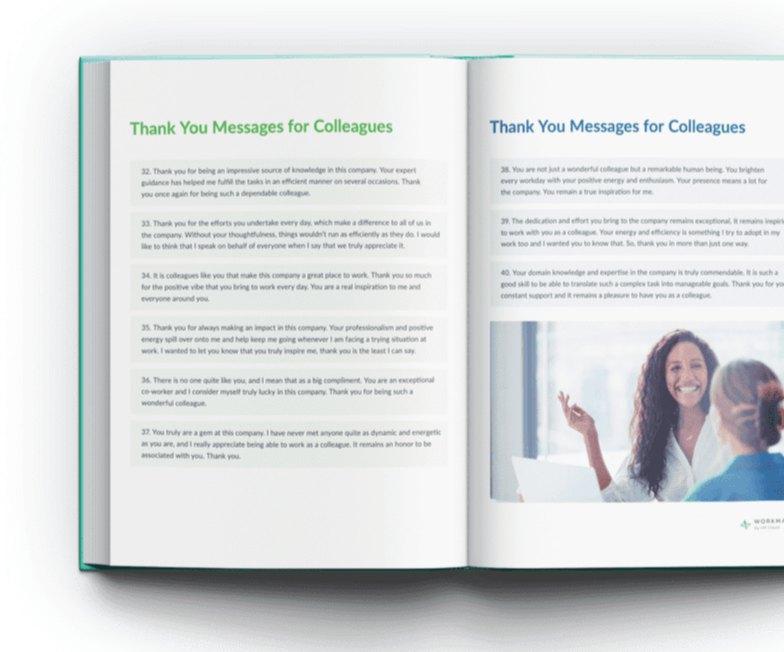The first week at a new job can be a stressful experience. New hires have to adapt to a new setting, different job functions, and company culture while being the new kid on the block. And with the growing number of remote workers, settling into a new job is even more complicated.
Successful onboarding helps new hires adapt to all these changes. Human resources can take steps to make this process simple and welcoming. Employees start off with a positive experience, which can lead to improved productivity and better employee retention.
How can HR teams create a great onboarding experience from day one?
Welcoming New Employees Right From the Start
Making new employees feel welcome starts before they even step foot into the office. Human resource managers and departments are uniquely skilled to personalize this process for each new employee. Early onboarding strategies start with a congratulatory letter telling them that the company is excited to get them started.
A great way to welcome a new hire is to get their department involved in this process. Allow them to create their own welcome process. They can add their own special details, like making a short video introducing team members.
New employees are always excited to learn about the company's benefits. Ship out a package with your employee handbook and a list of the company's most exciting perks. Highlight unique corporate outings or activities, such as a company picnic or team building events.
You can even include some basic corporate swag like a branded pen and coffee mug. A strong, personalized welcome like this will go a long way to creating a positive memory for freshly hired staff members.
Simplifying the Onboarding Process
To help new employees adapt to the office and company procedures, adapt the onboarding process for a smoother transition. New hires have a lot to get done during their first few days. Simplifying tasks for them will help everyone get up to speed quickly.
Here’s how your department can do that:
The First Day
To ensure new employees have a near-perfect onboarding experience, their first day should be more welcoming and less overwhelming. Work with their department to ensure that they have everything they need to get started on day one. That may mean a bit of extra leg work to ensure that their technology and working spaces are in good order.
Next, make their first day interesting. It will be hard for new hires to retain much if they are forced to watch a one or two-hour video of policies. Go over the broad strokes of what they need to know and offer to answer any detailed questions later.
Meeting their team should be a pleasant experience. If you can, organize as many team members as possible for a brief conference with introductions. If there is more time, you can plan a lunch or breakfast meet and greet.
Getting these small details worked out beforehand will provide a better onboarding experience. When asked, “How was your first day?” new hires can give a good report. This will help your company to stand out to job seekers.
New Hire Documentation
While you don’t want to overwhelm new employees with a lot of paperwork, it is necessary to ensure that important business policies are written down and handed out. Have employees sign the form attesting that they have read and agreed to them as well.
These policies should include:
-
Rules for governing device use, repair, loss, and return, especially any that can be taken home.
-
Acceptable behaviors and disciplinary processes. Include social media policies.
-
Business and/or work hours, including holidays, paid time off, and sick leave policies.
-
Salary and payment policies.
-
A more detailed explanation of the benefits.
However, don’t overwhelm them with too much information at one time. Mail the document ahead of time and review the basics at their orientation. You can also provide electronic documentation to reduce paperwork for them.
Onboarding Beyond Day One
Employees should start their new jobs with clear expectations, goals, and the ability to ask questions to clear up confusion. Human resource managers should understand that onboarding doesn’t end with dropping new hires off at their departments to ensure this transition goes smoothly. Instead, HR should collaborate with each department to provide clarity and communication for a successful transition.
Here are some ways that groups can work together to help new employees have a better onboarding experience:
-
Assign a mentor or a work buddy. The first day in a new office can be intimidating. A mentor can help new employees navigate their career path in your company, and a work buddy provides a lunch partner for day one. They can also answer questions you might not have thought of, like “What do I do if something breaks?”
The more guidance they have, the quicker new staff members will integrate into the company. This will help them feel like part of the team right away.
-
Spread out the onboarding process. Outside what needs to be covered the first week, create a process to help employees get through their first 90 days. This can ease their stress compared to making them get everything done at once.
This also helps create a positive atmosphere to hit their stride without too much undue anxiety. At 30 days, send them a survey about their onboarding experience so they have time to process their experience. This data is critical to refining your onboarding process.
To improve employee satisfaction, keep in touch from time to time to see how they are doing. New employees who are struggling may feel like giving up after a month and a half. This is a good time to set up a check-in appointment.
If they are struggling, ask them about their specific challenges and if they'd like their department head to sit in a meeting. This will allow you to clear up minor issues and develop a strategy for bigger problems. Following up again at the end of 90 days shows them that they are valuable to the company.
-
Share company culture. A 2019 survey showed that 79% of adults look at a company’s culture and mission before they even apply. That means that most of your new hires are already keenly aware of this factor.
It’s up to you to make sure that they know what the culture looks like in practice. You may want to survey your current employees to describe your corporate culture. Draft a small document or graphic to illustrate it and make it part of your onboarding documentation.
Onboarding Remote Workers
Since the pandemic, many positions have switched to fully or partially remote. If this applies to you, you can still create a positive onboarding experience. It will just take a bit more effort for today’s HR managers to boost employee morale from a distance.
First of all, all documentation will need to be stored in the cloud. Use digital signatures to streamline employee responses. Work with your IT department to safely set up and secure these processes.
One of your most important tools is creating reliable communication and check-in processes, particularly for remote workers. Organize virtual get-together events along with regular webcam check-ins and work meetings. Integrate ice-breaker and team-building activities to encourage connection with your remote workers.
This new paradigm means you must address remote working issues for both new employees. Set up clear digital policies and make them part of your welcome package. Give new hires the tools to be successful when working remotely, including ways to manage work-life balance and how to incorporate company culture at home.
Providing a positive new hire experience even before their first day goes a long way to improving employee satisfaction. That can lead to more productivity and better retention. HR departments that develop positive onboarding experiences help their companies succeed.
The 40 Best Thank You
Messages for Colleagues
building a positive and engaged culture at your company.

About Author: This article is written by a marketing team member at HR Cloud. HR Cloud is a leading provider of proven HR solutions, including recruiting, onboarding, employee communications & engagement, and rewards & recognition. Our user-friendly software increases employee productivity, delivers time and cost savings, and minimizes compliance risk.
Keep Reading
Remote Onboarding Done Right: A Step-by-Step Guide for HR Teams
When a new hire walks into your office, you smile, shake hands, and show them around. But
Importance of Onboarding: Purpose, Benefits, and What It Means for Your Workplace
Think about the last time you joined a new team. You had questions, maybe even doubts.

